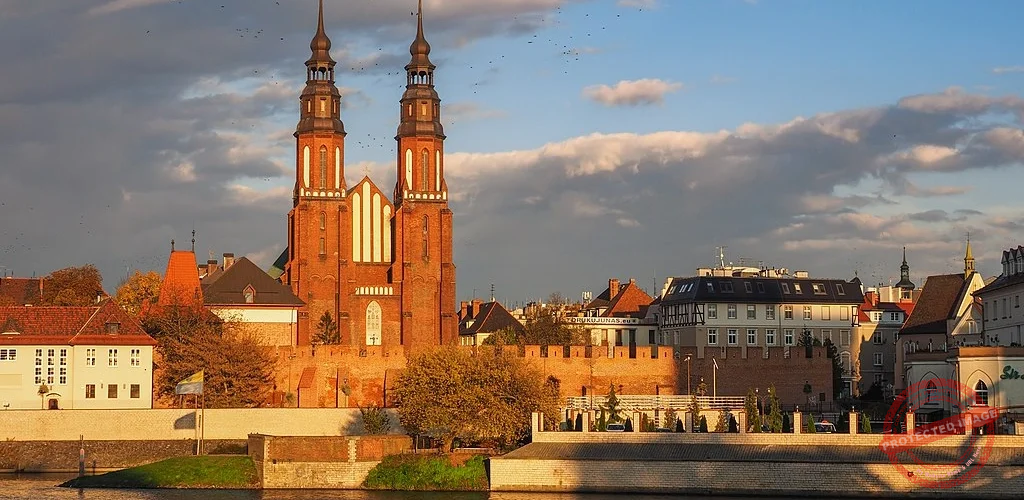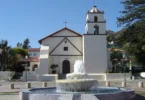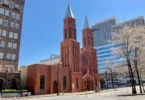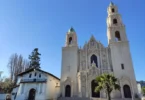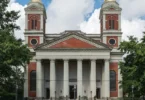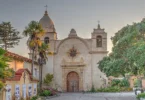Introduction
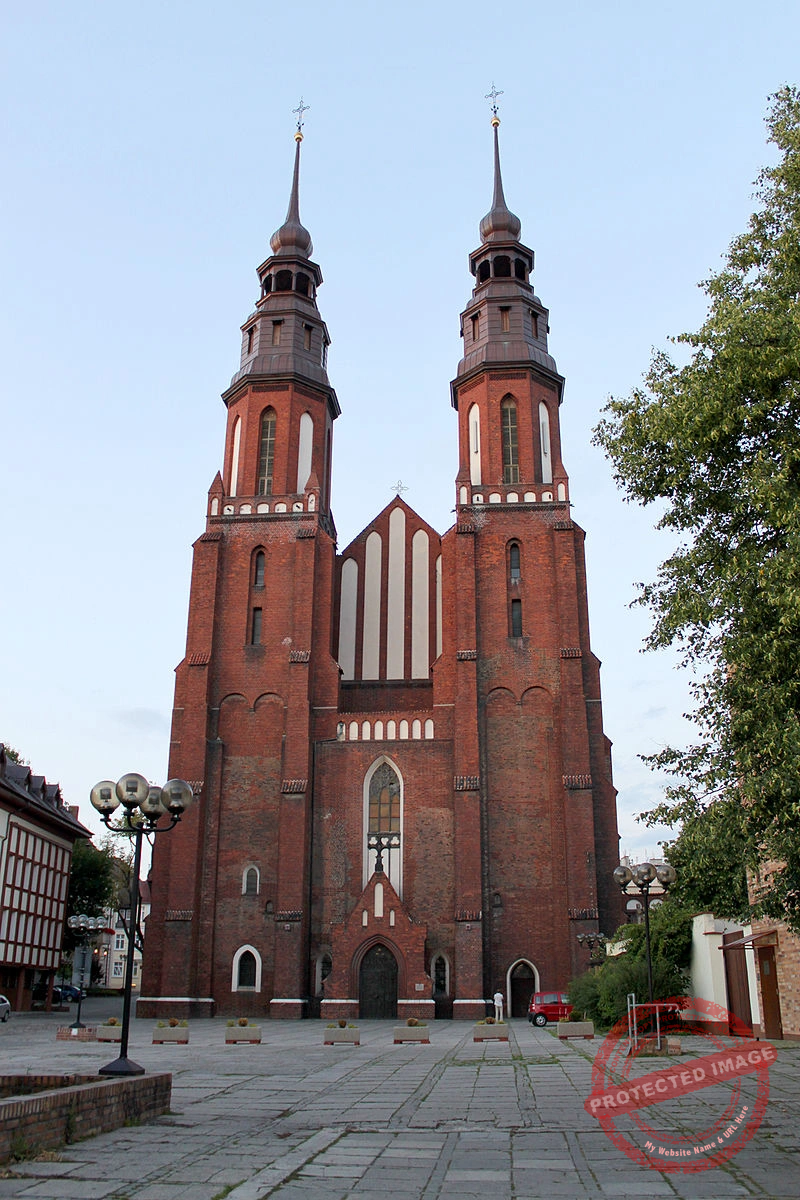
Opole Cathedral is also known as the Cathedral of the Holy Cross (Polish: Katedra Podwyszenia Krzya witego) and is a religious structure that is affiliated with the Catholic Church. It serves as a parish church and is the cathedral city of Opole in Poland. The church is in the Opole deanery’s parish of the Holy Cross, which is a part of the 1972-founded Roman Catholic Diocese of Opole. The temple was listed as number 763/64 in the Opole register of regional monuments on April 3, 1964. The current church was built in the fifteenth century on the site where before there was a structure of the eleventh and thirteenth centuries. It was rebuilt several times. With towers with a height of 73 meters is the tallest structure in the city. A painting of the Virgin of Opole was permanently installed in the temple in 1702. The Cathedral contains the Piast Chapel, which is the burial site of Duke Jan II the Good of the Piast dynasty.
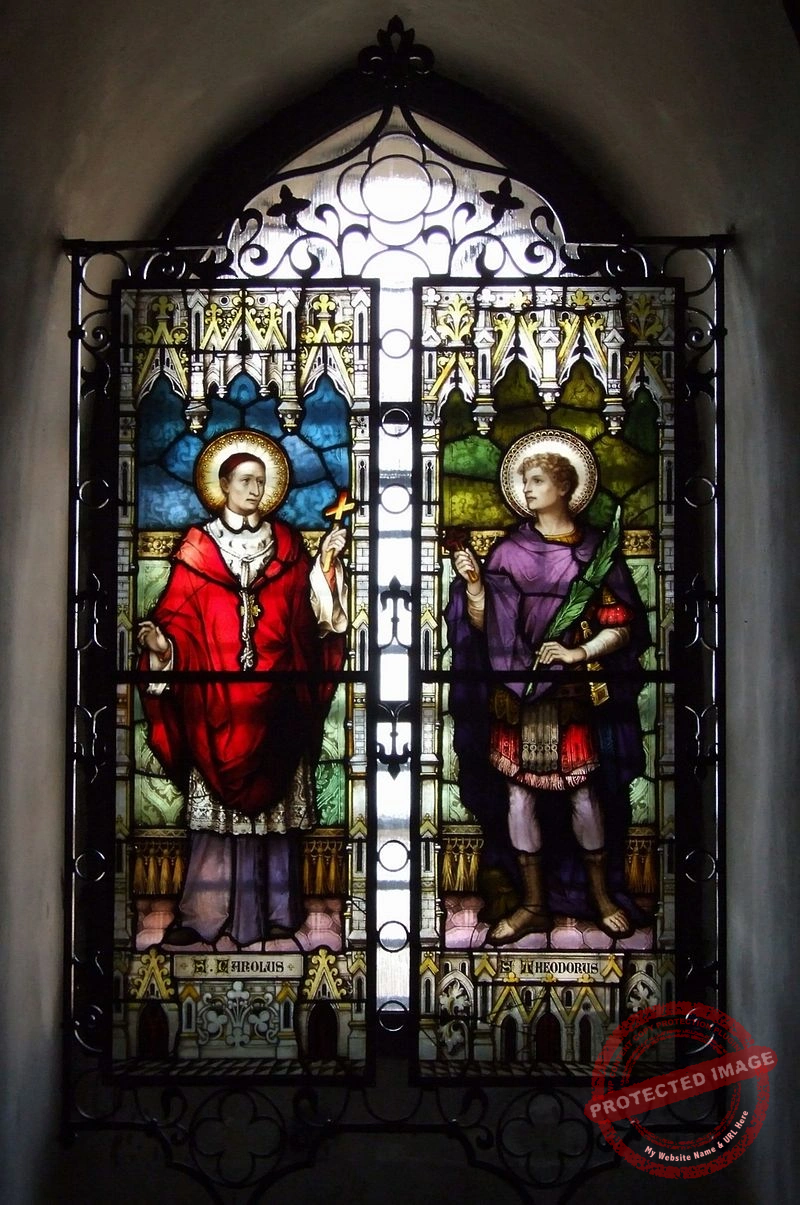
Early Foundations and Medieval Growth
Bolesaw I the Brave is said to have established the first church in Opole in the year 1005. The earliest recorded mention of a priest by the name of Reginald dates back to 1223. Tradition also says that in 1024, Bishop Klemens of Wrocław donated relics of the Holy Cross to the church. A lost document from 1102 is mentioned in a 17th-century chronicle. A chapter was established in Opole at the beginning of the 13th century. Around 1227, an archdeaconry was established, which was mentioned once more in 1230. In 1239, Bishop Thomas I of Wrocław established a collegiate church with Grzegorz as its first provost. The parish was transferred from an older church in 1295 to a Romanesque basilica that Duke Bolko I of Opole had just built. The church was consecrated on November 16, 1295.
Fires, Rebuilding, and Gothic Additions
A major city fire in 1415 destroyed large parts of the church, including 15 altars and several Gothic triptychs, although the reliquary survived. Rebuilding was put off because of financial issues. By 1470, significant repairs had started, and the church took shape in late Gothic style. The Holy Trinity Chapel (later known as the Piast Chapel) was added around 1518, along with chapels of St. Hedwig and St. Anne. The full reconstruction was finished in 1520 under Duke John II the Good. Fires struck again in 1615, 1622, and 1647, damaging the roof, towers, and interior altars. Restoration brought Baroque altars, a new sacristy, and a tile roof in 1652–1653.
19th and Early 20th Century Renovations
After secularization in 1810, the collegiate chapter was dissolved. In the 1800s, several rounds of restoration took place: in 1836, vaults were reinforced; in 1882, interiors were updated with neo-Gothic décor, polychrome, and stained glass. From 1897 to 1902, major work was led by architect Józef Cimbollek, who redesigned the western façade, added tower superstructures, and unified various annexes. Neo-Gothic altars dedicated to the Holy Family, the Sacred Heart of Jesus, the Immaculate Heart of Mary, and St. Hedwig were put in place. A new organ was built by the Schlaga Company from Świdnica, and a choir loft was added in 1912–1914.
Post-War Developments and Recent Work
On August 15, 1945, Cardinal August Hlond appointed Bolesław Kominek as the first apostolic administrator of Opole Silesia, effectively raising the church to pro-cathedral status. In 1952, the city celebrated 250 years of the image of Our Lady of Opole, with Cardinal Stefan Wyszyński present. Between 1963 and 1966, under Bishop Franciszek Jop and Prelate Antoni Jokiel, the church was extensively renovated: much of the neo-Gothic décor was removed, Gothic brickwork exposed, and new stained glass, polychrome, and sgraffito by Stanisław Szmuc were added. Cardinal Wyszyński and Archbishop Karol Wojtyła (later Pope John Paul II) took part in the millennium celebrations. In 1995, the 700th anniversary of the church was marked with organ restoration and the addition of bronze doors showing the history of salvation. In 1998, the grave of Prince Jan II the Good was exhumed and transferred to the Piast Chapel in 1999. Between 2008 and 2009, the towers were renovated, revealing historic time capsules filled with documents, coins, postcards, and religious relics, which were preserved and archived. In August 2022, the cathedral was temporarily closed for floor replacement, and services moved to the Church of St. Sebastian.
Architecture of Cathedral Basilica of the Holy Cross, Opole, Poland
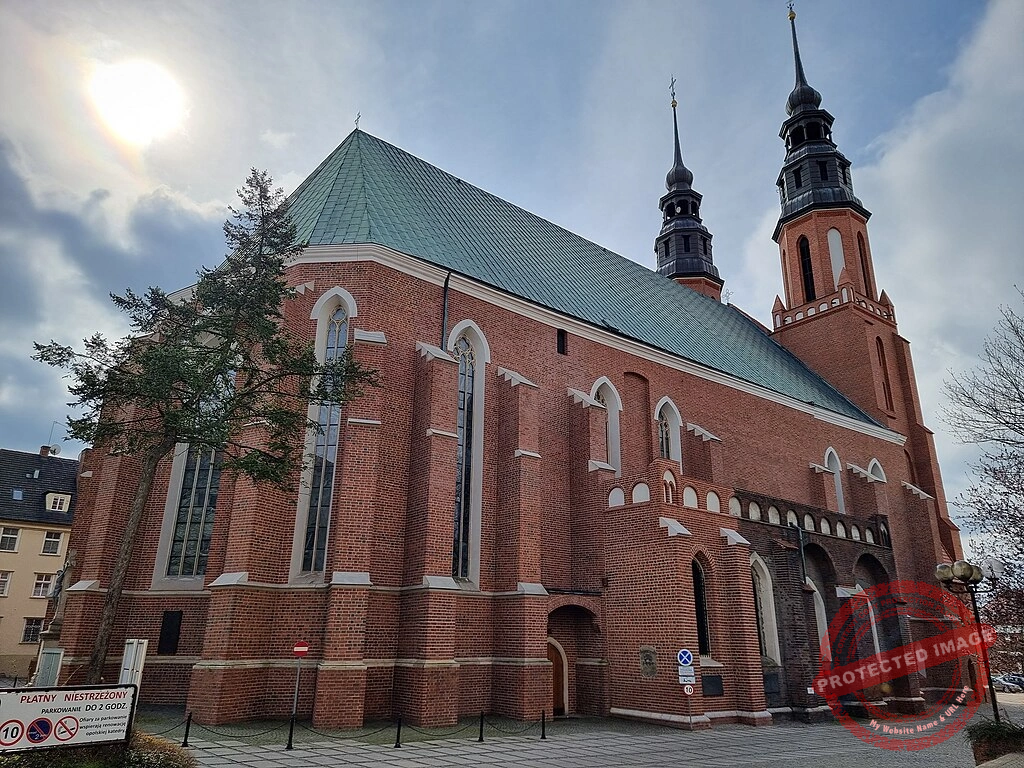
Appearance
The cathedral is Gothic in character, with towers built in the neo-Gothic style. It was built of brick, with older sections of the walls featuring a Wendish motif. The entire structure is covered with a sloping roof, which was clad with copper in 1978. The church is 60.7 m long, 26.5 m wide, and 18 m high. The towers are 73 m high and topped with domes and crosses restored in 2007–2008.The cathedral grounds are entered through a historic gate, atop which is a scene of the crucifixion of Jesus Christ. On the right, on a lower step, stands a sculpture of Edmund Bojanowski from Gostyń, founder of the Congregation of the Sisters Servants of the Blessed Virgin Mary of the Immaculate Conception, while on the left is a sculpture of Alojzy Liguda , baptized in the Opole church. Near the gate is the grave of Monsignor Stefan Balde, who served as pastor of the local parish from 1977 to 2003, until his death. On December 13, 2011, on the 30th anniversary of the imposition of martial law, a monument to Jerzy Popiełuszko was unveiled in front of the cathedral. It was funded by the Regional Board of the NSZZ “Solidarity” trade union in Opole Silesia. The sculpture contains a casket with second-class relics from the priest’s vestments. The church can be entered via two routes: the main entrance and the southern porch. The main doors were made of bronze and designed by Adolf Panitz. They arrived in 1997, on the thousandth anniversary of St. Adalbert’s death and the 700th anniversary of the parish. Scenes on the doors present the history of the city and the church. Saints also appear: Our Lady of Opole, St. Anne, Peter the Apostle, Paul of Tarsus, Hedwig of Silesia , Jacek Odrowąż, Czesław Odrowąż, Blessed Bronisława, Barbara of Nicomedia, St. Florian, Maximilian Maria Kolbe, Edith Stein, as well as Prince John II the Good, Franciszek Jop, John Paul II , and Archbishop Alfons Nossol . The upper part of the gate depicts the work of creation. Above the entrance to the southern porch is a tympanum, also designed by Adolf Panitz. It depicts, among others, Mary and Child and John Paul II.
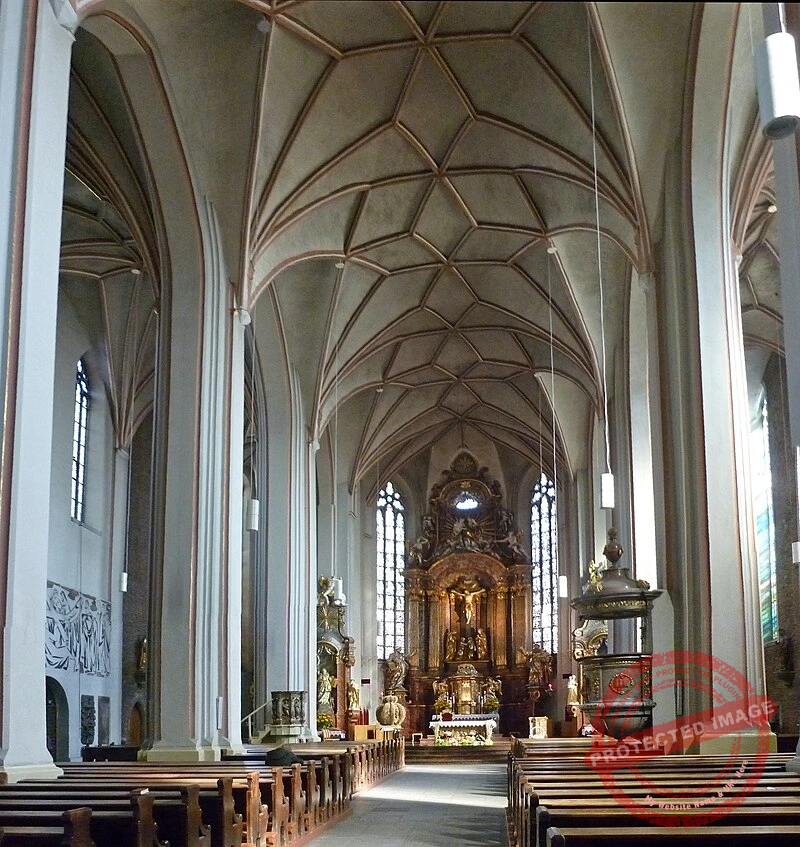
The interior and furnishings of the cathedral
Interior of the Temple
The inside of the cathedral is pretty grand. It’s made up of three naves the big main one in the center and two smaller ones on the sides. At the front, there’s a semicircular chancel, plus two side apses. Inside the chancel, you’ll find three altars from the late Baroque period. The main altar was put up in 1773 and was probably built by Italian craftsmen. But interestingly, the central part showing the Crucifixion was added later, in 1885, and came from Munich. On both sides of the tabernacle are statues of angels, and on top of that sits a sculpture of the Paschal Lamb. Just above, there’s a big scene showing Jesus being crucified on Golgotha, with Mary, St. John, and Mary Magdalene at His side. Off to the left and right, on little shelves, are statues of St. Peter (with a key) and St. Paul (holding a book). At the very top, there’s a scene showing the Holy Trinity, surrounded by more angels. The main altar is flanked by two side ones one for St. Joseph and one for St. Urban.
The Baroque Altar of the Holy Trinity
In one of the side apses, there’s this beautiful old altar dedicated to the Holy Trinity. It’s the oldest in the church, built in 1652, and it’s a pretty tall piece about five meters. It’s made from painted wood and covered in gold leaf. It originally stood in the Piast Chapel, but after a fire, they saved it and moved it to St. Jadwiga’s Chapel in 1964, where it still stands. In the center, there’s a painting of God the Father, Jesus the Son, and the Holy Spirit (as a dove). Above that is a painting of St. Jude Thaddeus. Nearby, on the wall, there are a few old epitaphs. One from 1627 is for Małgorzata Schreiber and shows Jesus. The message says it’s a memorial built by her husband, Grzegorz of Opole. Another, a bit further away, is for Fr. Jan from Półwsie, a former church curator. He’s buried under the church. His inscription asks for prayers for him and his father Mikołaj, who died in 1557. There are two more plaques between this altar and St. Jadwiga’s Chapel. One is for Wacław Czibulka, from the 1500s, though the writing’s mostly worn away. The other is for Jerzy Skopek, another church curator, and it honors his parents, Baltazar and Helena.
Our Lady of Opole, the Piast Chapel, and Jan Dobry’s Tomb
In the second side apse, there’s the altar of Our Lady of Opole, brought from Piekary Śląskie in the late 1600s or early 1700s and crowned by Pope John Paul II in 1983. Surrounded by angels and an image of God the Father, it is also lined with votive offerings. Near it stands the epitaph of Bishop Franciszek Jop, made by A. Panitz. In the southern part of the cathedral is the Piast Chapel, built between the 15th and 16th centuries. Its centerpiece is the marble tomb of Jan Dobry, the last of the Opole Piasts, who died in 1532. Originally buried in the main nave, he was exhumed in 1998 and moved here in 1999. His red marble epitaph includes the Opole Piast eagle and a Latin inscription remembering his death and virtues. The chapel also includes the 1519 Gothic triptych brought from Kostowo in 1965 and conserved in 2008, showing the Virgin Mary with Child, St. Barbara, St. Catherine, and others. There’s also the bust of John Paul II by Gustin Keser and plaques commemorating Silesian insurgents (1996), Tadeusz Podkówka, and the Katyn massacre victims, plus a Solidarity plaque (2010). The Piast family tree and two colorful stained-glass windows showing Opole’s landmarks complete the room.
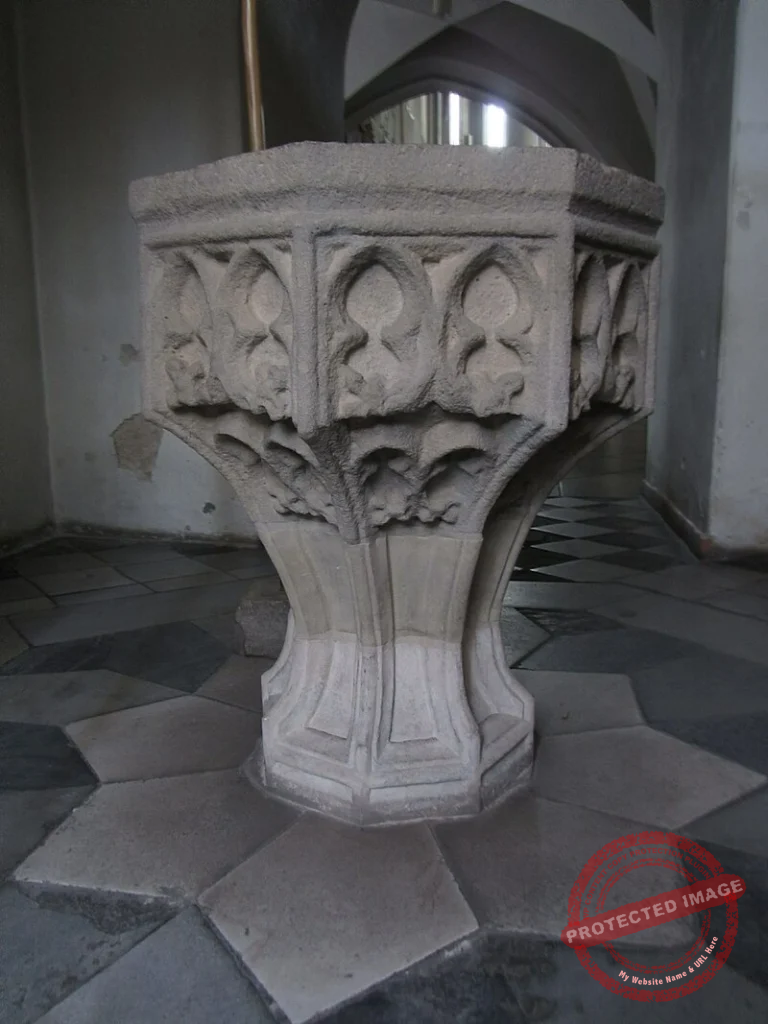
Chapels of St. Jadwiga and St. Anne, and Gothic Baptismal Font
On the opposite side from the Piast Chapel is the Chapel of St. Jadwiga. Its altar, moved from the main nave in 1966, features figures of St. Jadwiga, Blessed Czesław, and St. Jacek, along with the Image of the Merciful Jesus and St. Faustina Kowalska. In the middle of the chapel is a baptismal font from 1850, with a sculpture of Jesus being baptized in the Jordan. Above, Zawadzki’s 1963 stained glass windows bring light to the space. Next is the Chapel of St. Anne on the north side of the church, featuring an altar with Franciszek Backer’s painting of St. Anne with Jesus. At the chapel’s entrance is Dorota Jędrzyczka’s epitaph (1574), showing her and her husband kneeling at the foot of the cross. The inscription, made by Joachim Jędrzyczka, honors his wife’s piety and faith.
Historic Font, Pulpits, and Sgraffito Art
In the western part of the cathedral, a 14th-century Gothic baptismal font the oldest monument in the church stands in a niche. Made of sandstone and limestone, it was lost around 1850 and rediscovered by accident in the 1960s. Behind it is stained glass showing St. Charles Borromeo and St. Theodore. The cathedral features two unique pulpits: the older Renaissance one near the altar, brought from Głuchołazy, and a Classical-style pulpit from 1805 by Jan Echter, closer to the center of the church. During 20th-century restorations, Stanisław Szmuc painted religious scenes using sgraffito technique, showing the discovery of the Holy Cross, the doubts about its authenticity, and its healing power when touched to the sick. These elements add both spiritual and artistic depth to the cathedral’s interior.
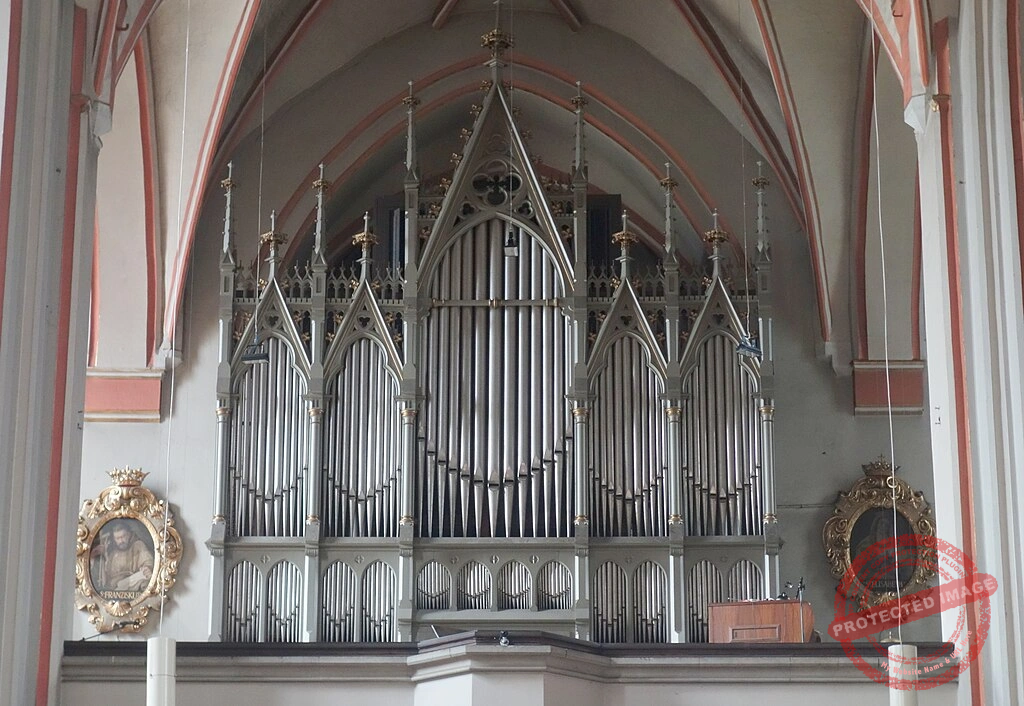
Organs
The Schlag & Söhne company from Widnica constructed the current organ in Opole Cathedral in 1898. It was a two-manual, 34-stop pneumatic instrument. The case and front of this organ remain preserved to this day. The playing table was incorporated into the organ case’s plinth. Currently, the former case is replaced by a door that allows access to the interior of the instrument. The instrument was completely rebuilt and expanded to 59 stops in 1941 by the Karniów-based Rieger company on the initiative of Father Prelate Józef Kubis, the parish priest at the time. The instrument was later restored and three stops were added, playing Spanish trumpets powered by a separate blower in the left side aisle (as seen from the altar), thanks to Father Prelate Stefan Balde, the next parish priest. In addition to the addition of trumpets, the arrangement of the third manual was slightly changed, giving it a more universal sound character. The international register of instruments includes the Opole Cathedral organ, which has exceptional sound quality.
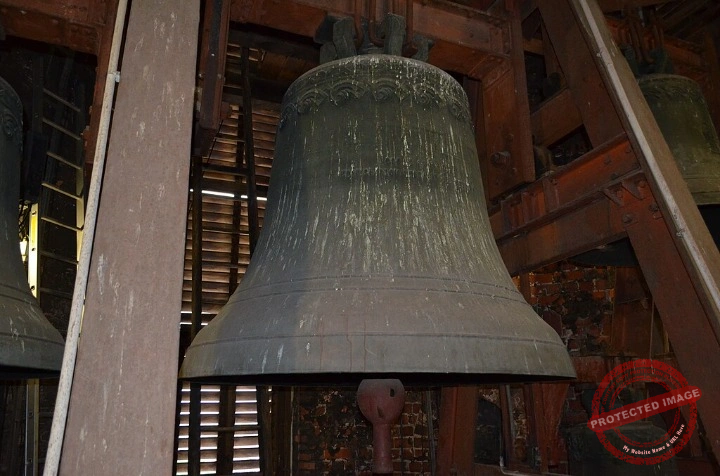
Bells
Initially, Bishop Franciszek Jop attempted to locate and bring back to Opole the old bells stolen during the war. After an unsuccessful search, in 1960, a decision was made to purchase a complete set of new bells. Unfortunately, the tradition of naming the largest bell after St. Adalbert , Opole’s patron saint, was not resumed. The smallest bell is the only and oldest surviving bell from the old set. The cathedral’s largest bell, Urban, is one of the largest bells in the Opole Voivodeship.
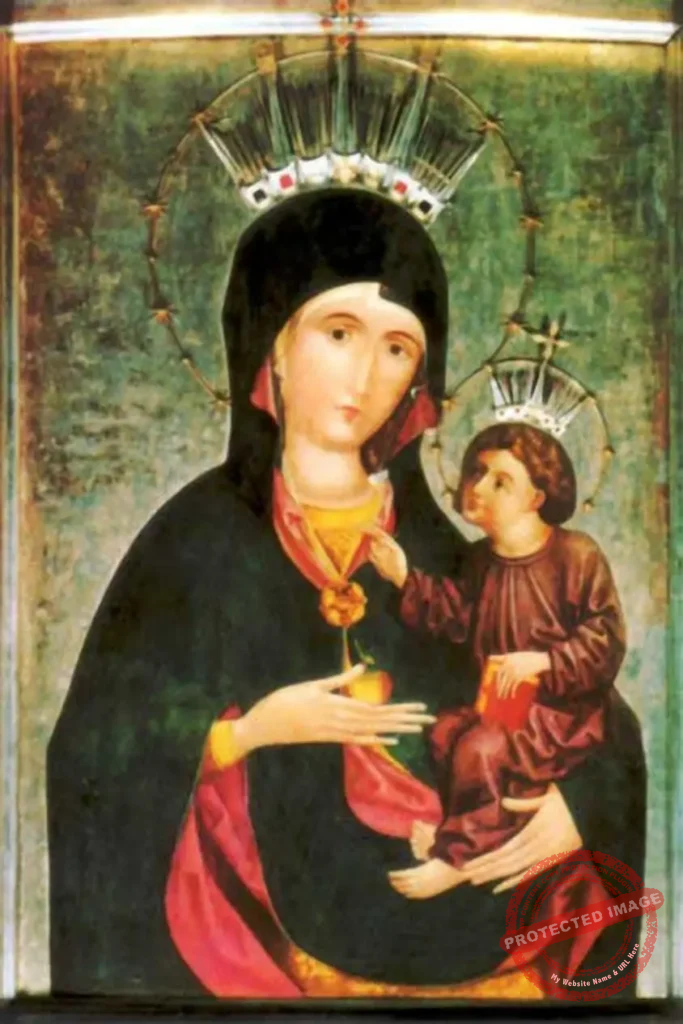
Our Lady of Opole
One of the side altars houses a painting of Our Lady of Opole. Between 1480 and 1500, it was painted on a linden board by an unidentified artist. The painting depicts Mary holding the Infant Jesus on her left arm. She holds an apple in her right hand and slightly tilts her head towards her son. Jesus, in turn, looks towards his mother, raising his right hand in a gesture of blessing and holding the Holy Bible in his left. In the Jesuit chronicle, the work is described as follows. It seems as though this wonderful Mother is looking at everyone. Even if there were thousands of people present, each one of them would think that Jesus’ mother is looking at him. The painting was created by Piekary lskie. In 1680, it was taken to Prague, where the plague broke out. Shortly after its return to Piekary Śląskie, the painting was taken by the Jesuits to Opole due to fears of a Turkish invasion. A copy of the painting remained in Piekary Śląskie. After the danger was averted, the Madonna returned to the Piekary church, but in 1702 it found itself back in Opole due to the Third Northern War . In 1813, the image of Mary was transferred to the Church of the Holy Cross in Opole, where it remains to this day. In the following years, the cult of the painting continued to develop. On June 21, 1983, on Pope John Paul II adorned the painting with a silver and gold crown at St. Anne’s Hill, several dozen kilometers southeast of Opole.
Feast Day
Feast Day : 14 September
The Cathedral Basilica of the Holy Cross in Opole, Poland, celebrates its feast day on September 14. This date marks the Feast of the Exaltation of the Holy Cross. It honors Christ’s victory through the cross and holds special significance for the local faithful.
Church Mass Timing
Monday to Friday : 6:30 AM , 8:00 AM , 6:30 PM.
Saturday : 7:00 AM , 8:00 AM , 6:30 PM.
Sunday : 7:00 AM , 8:00 AM , 9:00 AM , 10:00 AM , 11:00 AM , 12:00 PM , 4:00 PM , 6:30 PM.
Church Opening Time:
Monday to wednesday : 6:30 AM, 7:30 PM.
Thursday to Sunday : Closed
Contact Info
Address : Opole Cathedral
Katedralna 2, 45-007 Opole, Poland.
Phone : +48 77 454 25 79
Accommodations
Connectivities
Airway
Cathedral Basilica of the Holy Cross, Opole, Poland, to Opole Airport Lotnicza distance between 34 min (25.2 km) via DW423.
Railway
Cathedral Basilica of the Holy Cross, Opole, Poland, to Opole Główne Railway Station, distance between 6 min (1.6 km) via Piastowska.

